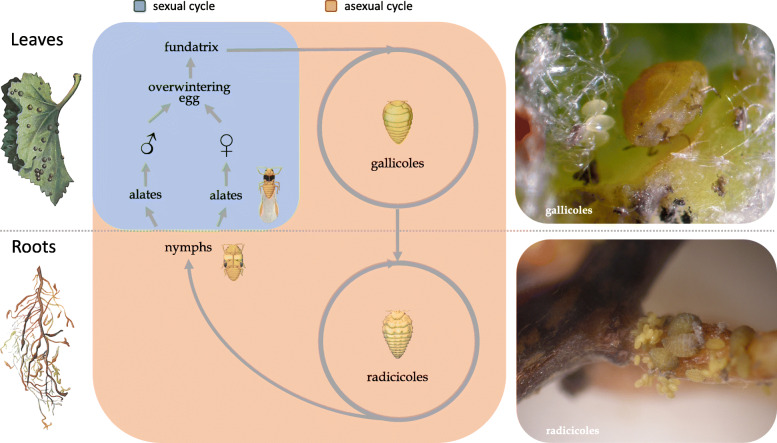Fig. 1.
The life cycle of grape phylloxera, alternating between a sexual phase and an asexual phase. Asexual females can feed either on leaves where they form galls (gallicoles) or on roots (radicicoles) of Vitis species. Eggs resulting from sexual reproduction hatch in the spring to produce a mobile stage (fundatrix) that initiates a colony on leaves. Gallicoles and radicicoles then undergo several asexual generations during a season. First instars of gallicoles and radicicoles are also mobile forms (crawlers) that allow the establishment of new feeding sites on active growing shoot tips or roots. Gallicoles first instars can migrate to roots, giving rise to radicicoles. Under inducing conditions, radicicoles can give rise to nymphal instars which emerge from the ground and molt to the alate adult stage achieving long-range dispersal. Alates, although morphologically identical, either engender exclusively sexual females or males. After mating, each sexual female lays a unique overwintering egg. Radicicoles can alternatively overwinter as first instar hibernants, implying a possible permanent looping of asexual cycles on roots. Gallicoles are the typical form found on native Vitis sp. in North America while radicicoles are most common on the cultivated varieties of Vitis vinifera throughout the world. Drawings included in the figure were taken from [9]

